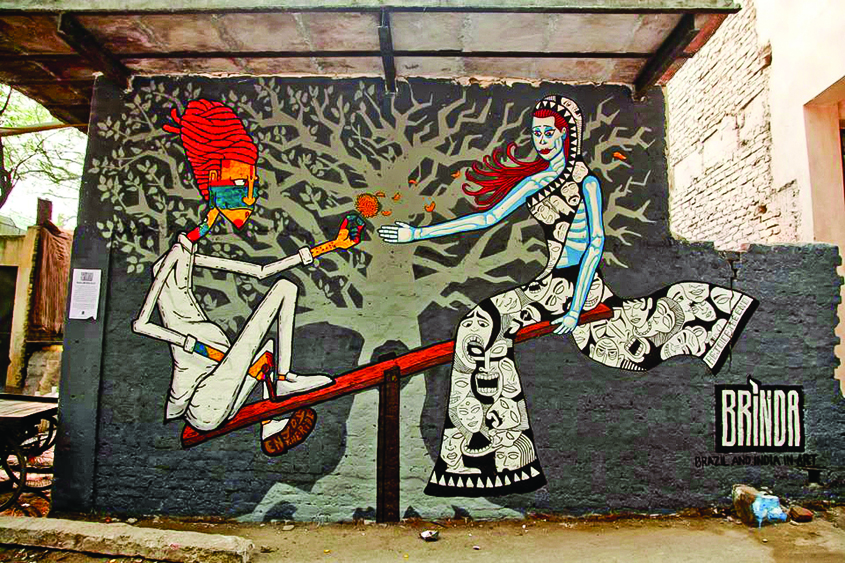Putting colours on the lifeless buildings, Paul tries to engage people through his artwork. “Using public art, we can voice our viewpoints and even raise public awareness on the issues that go ignored otherwise by the media,” the artist tells Guardian 20.
Talking about the purpose behind his street art, the artist says, “The visual landscape of the city is filled with advertisements and messages. It is a way of selling the idea of happiness through the consumption of products and services to people. But this only leads to a never-ending race of instant gratification. Hence, it is essential to remind people of the genuinely important things in life which are not connected to money. This gives more meaning to our everyday struggles and can even improve our quality of life — both aesthetically and spiritually.”
He recently amazed whisky lovers with his art work at the LBB Dessert Bazaar where the theme of the event was Cutty Sark, the world famous whisky. The work was a fusion between Scottish and Indian culture, with an eye on style, fun and happiness.
According to Paul, in a country of high economic disparity, street art acts as a social leveller by placing all economic classes on the same platform. One doesn’t need to be rich or well-educated to interact and be inspired by public art. In that sense, street art is probably the most impactful form of art that exists today.
Having worked on projects like Brinda and Quijote Wallah, the artist now aims at bringing communities together and focus on issues that really matter in one’s life. With the Brinda project in 2012 he sought out to expand the possibilities of bilateral relations between India and Brazil — with projects that involved people of both countries — and promote mutual recognition of cultural and artistic similarities and differences. “We started from the belief that through social, cultural and even emotional ties, Brazil and India can establish even more profitable and lasting relationships. But the project went much further than that; touching lives in a way we had never imagined,” says Paul.

Locations such as Agrasen Ki Baoli, Lodhi Art District and Shahpur Jat are among the places where you can find some of Paul’s famous graffiti works. Talking about his Agarsen ki Baoli project, Paul says, “Despite being a protected monument by the Archaeological Survey of India, the step well was in a bad shape and rarely visited by tourists. The media attention that the Baoli got was due to our mural. It encouraged the authorities to run a cleanup drive and reopen the Baoli in its full glory. Soon enough you could see locals setting up small shops, selling tea and other refreshments. In this way, through street art we not only brought focus to areas of the city which otherwise had been ignored and left to ruins, but also led to the economic upliftment of the surrounding community.”
Paul aims now to train more women to express themselves through public art. He continuously works in various workshops and mentor programmes-reaching out to women from all segments of society. The goal is to create a self-sustaining sub-culture where street art is used to create awareness and bring about a positive change in both government policy and society.
In 2015, with the Walls of Women project, he attempted to use public art to create social awareness of gender-related issues in India. The attempt was to bridge the glaring misrepresentation of women in a mostly male-dominated street art community, while still addressing issues of gender equity, sexual assault and social suppression through the same medium. “The power to be able to express yourself feely in public can be a liberating experience. It can be a strong voice for issues that go unheard,” says Paul.

Under his Walls of Women (WOW) project, Paul collaborated with international female artist crew Ara Peng, to create empowering murals for sex workers. This brought both media and public attention to the conditions and challenges of the women living in the red light district of Delhi, G.B. Road.
Paul asserts that street art is most effective in conveying social messages. “Across the globe, many communities associate graffiti or street art with vandalism, crime and gang violence. The street art movement is still at a very nascent stage in India. My goal is to drive the Indian street art scene to act as a trigger for positive psychological and cultural growth in society. To make people feel more responsible and connected,” the artist concludes.

